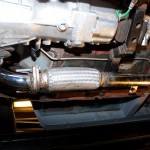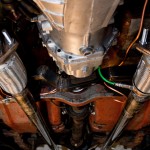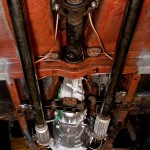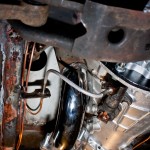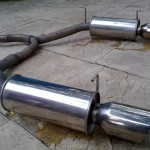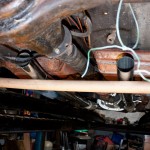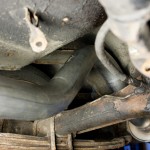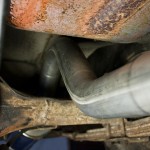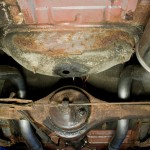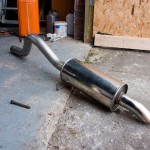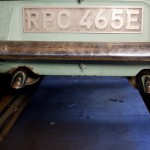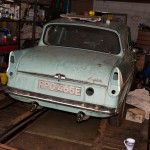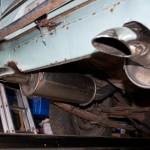After a small break to do some running repairs to the garage building, I'm back with another update.
The first job was to unbox and mount the servos that were purchased last time - the only place for them is in the boot. Some minor modifications to the supplied mounting brackets, and they're all lined up at the front of the boot.
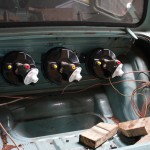
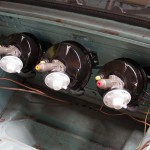
With 3 servos so far from the engine, and needing to be operated by vacuum, the usual route of providing vacuum from the inlet manifold on the engine would not have been ideal - especially with a turbo engine and requiring a servo for the clutch, enough vacuum can not be guaranteed. Therefore, we have decided to make use of an old CO2 welding bottle as a vacuum chamber to provide a large amount of vacuum to the 3 servos.
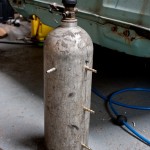
The bottle was fitted with some barbs to fit pipework to, and fitted into the boot of the car, and a mounting bracket was fabricated to support the end of the bottle where it tapers.
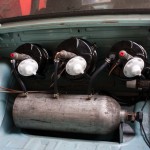
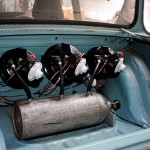
As I mentioned earlier, the vaccum will not be provided by the engine, so instead outside assistance is required to provide a vacuum. There are many vacuum pumps available, but most of these are driven directly from the engine, and the majority of these also require an oil supply - something that's not going to be easy. Therefore, we found an electric vaccum pump, usually fitted to various VAG cars (this one listed as being for an Audi TT), which requires purely a 12v electrical connection. A vibration-reducing mount was made using an old cotton-reel style rubber mount, and it was plumbed up to the vacuum chamber.
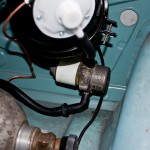
Applying 12v power to the vacuum pump until the chamber was "full" (or should that be empty?) of vacuum - it was time to test the clutch out. As predicted, this greatly reduced the effort required to operate the clutch, but it still it was not enough to make it comfortable to use - I want this to be a car that's not a chore to drive, and to have a modern feel to it. Therefore, to aid the servo assistance, we also adjusted the pedals slightly to further improve the levering force available from the pedal to reduce effort. The arms that operate the master cylinders was shortened, and the operating arms inside were lengthened slightly.
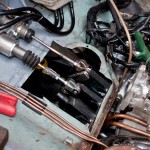
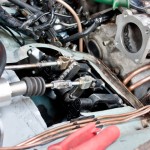
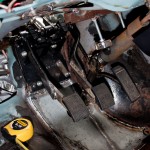
The combination of adjustments to the pedals, and the servos, has made the clutch operation now akin to a modern car - and I currently also only have a standard FTO clutch cover fitted - which may need to be uprated to one with higher clamping force to cope with putting down the 50% extra power over and above what a standard FTO clutch is designed for - this will add more resistance to the clutch system - and the assistance of the servo is definitely still required.
Now that the clutch and brake pedals were sorted, why not finish off the trio, with a new throttle cable hooked up, and a custom bracket made to attach it to the inlet manifold at the required angle to match with the adjusted throttle body location.
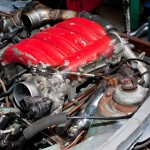
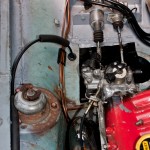
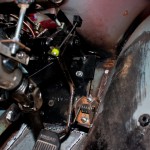


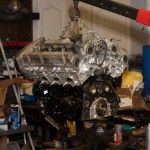
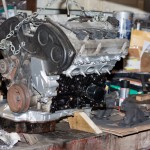
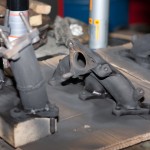
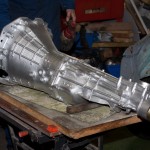
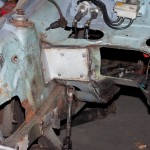
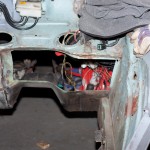
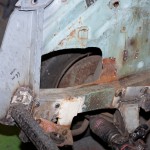
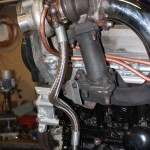
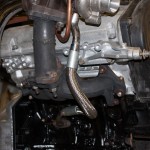
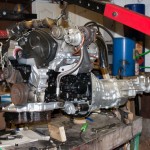
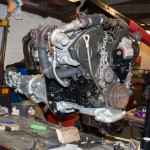
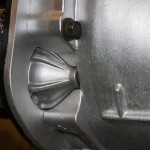
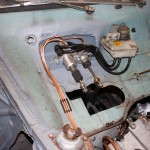
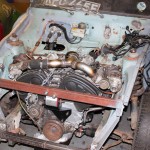
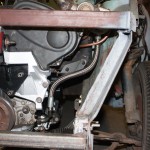
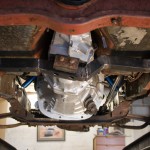
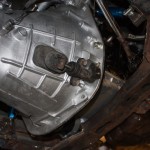
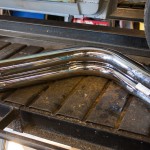
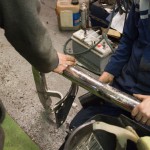
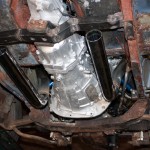
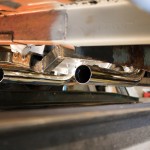
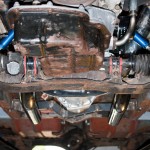



 however, this thing will be a total monster, and that red-top would have been insane enough.
however, this thing will be a total monster, and that red-top would have been insane enough.